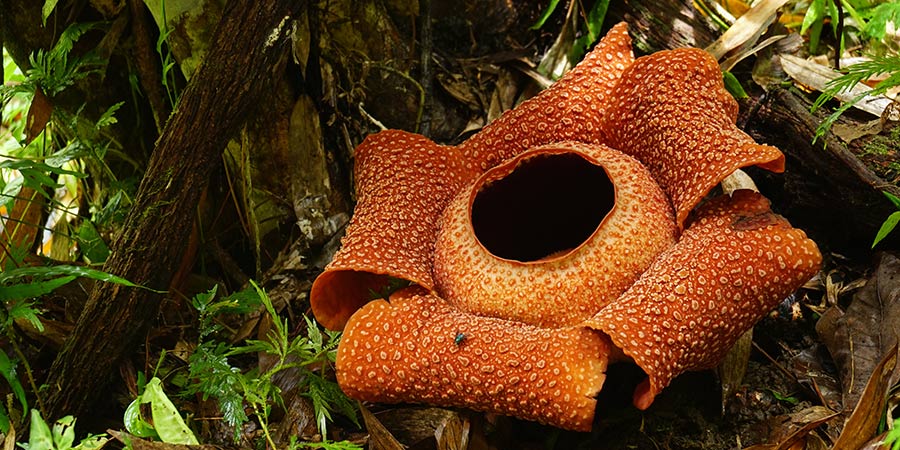Plants play an extremely important role on the planet; they produce oxygen, reduce carbon dioxide levels, help regulate our climate, and provide sustenance to animals and humans alike - not to mention the irrefutable beauty that they bring to our landscapes. May 18th saw the celebration of Plant Conservation Day, a day in which we are encouraged to celebrate the importance of plants and learn more about the part we can play in their conservation, which has got us thinking about the myriad of weird and wonderful flora that can be found around the world. Read on to discover more about some of the world's rarest and most unusual plants, where they can be found, and what we can all do in order to help protect and preserve them.
The Corpse Flower
First discovered in 1878 by Odoardo Beccari, an Italian botanist, this large flowering plant is one of the world's rarest. Amorphophallus titanium, it's somewhat more appealing title, grows naturally as a wildflower in tropical Asia, although the plant can be found at various botanical gardens worldwide; often a spectacle that is visited by thousands of locals. A Corpse Flower can take an astonishing seven to ten years to bloom, and when it does, the bloom lasts for just 24-36 hours - although, given the fact that, when in bloom, it emits an odour that has been likened to that of rotting flesh, we can't help but think that's not particularly a bad thing!
Venus Flytrap
One of the most famous rare plants, the Venus Flytrap is a carnivorous plant native to the wetlands of subtropical America; mainly the east coast in North Carolina and South Carolina. The Venus Flytrap is fascinating, and for many future plant aficionados in America, their first foray into rare and interesting plants, with many Venus Flytraps kept by children as educational "pet plants". The Venus Flytrap consists of two flat, mouth-like leaves, with short, sensitive "sensor hairs". When a fly, or indeed any other small insect, lands on the plant it triggers these hairs and creates an electric signal, causing the trap to snap shut and trap the insect. After several days of digestion, the plant will open up ready for its next unsuspecting victim.
Vegetable Sheep
The Raoulia rubra is a peculiar cushion-like shrub nicknamed the "vegetable sheep" due to its woolly white appearance, which from a distance resembles a sheep. The plant is actually made up of a carpet of fuzzy white hairs, and despite appearances, is hard to the touch. Beneath its woolly exterior lies the remains of older, rotten leaves, which form a material akin to peat which stores water like a sponge. This remarkable plant is native to the mountainous regions of New Zealand, where it escapes the wrath of the elements due to its innovate water storage method and unusual shape; its ground-hugging form protects it from the harsh winds and weight of the snow in winter and reflects the sun's powerful rays during the summer months.
Rafflesia
Rafflesia is another plant bestowed with the gruesome pseudonym of "corpse plant". Also referred to as "corpse lily", the plant is parasitic and doesn't have roots, leaves or a stem of its own; instead, this majestic plant attaches itself to another host plant in order to receive water and nutrients. The strangely beautiful flower, which can weigh up to twenty pounds and grow as large as three feet across, emits a repulsive odour similar to rotting meat in order to attract flies, who then pollinate the plant. Found in forested regions of Asia, typically in Borneo and Sumatra, these fascinating plants are sadly nearing extinction due to commercial logging in their native forests.
So, what can be done to help with conservation? The Botanic Gardens Conservation International (http://www.bgci.org/) is a great starting point and a superb source of online information, with an abundance of educational material available to those interested in the protection and conservation of plants and wildlife. In the UK, the National Trust cares for hundreds of gardens and parks that are home to many of the UK's rarest plants, and their dedicated Plant Conservation Centre (PCC) aims to help conserve this rich diversity of plants. You can support the National Trust by becoming a member, giving your time as a volunteer or by making a monetary donation.
There are also plenty of simple changes that we can all make in order to help with conservation. Rich, forested areas are vital for rare and unusual plants to thrive. Cutting down on paper waste is one of the easiest ways to help protect these forests, and is an easy change to implement in your life. Recycling paper, purchasing an eco-friendly reusable coffee cup and switching to online bank statements are simple steps that you can take to help reduce your personal paper waste, and in turn, play an important part in helping to protect the world's wonderful array of plant life.





